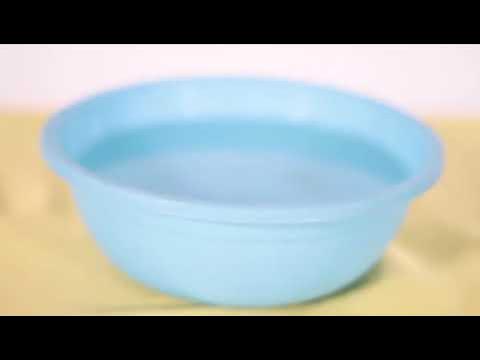Why Sugar Always Twists Light To The Right - Optical Rotation
Summary
TLDRThis video delves into a fascinating experiment demonstrating how sugar in a solution can twist polarized light. The narrator explains the quantum mechanics behind polarized light, the concept of circular and linear polarization, and how sugar's molecular structure affects light's behavior. The key insight is that sugar molecules have a handedness, causing the light to rotate as it passes through the solution. The video also emphasizes the counterintuitive nature of the experiment and provides a clear, visual breakdown of the science involved. The narrator concludes by recommending the Blinkist app for concise non-fiction book summaries.
Takeaways
- 🔬 Sugar solutions can twist polarized light, a fascinating phenomenon that challenges intuition.
- 💡 Light is an oscillation in the electric and magnetic fields, and unpolarized light oscillates in all directions.
- 🔍 Polarized light occurs when unpolarized light passes through a polarizing filter, restricting oscillation to one direction.
- 🌀 A sugar solution twists the direction of polarized light due to its molecular structure, and the amount of twist depends on the sugar concentration.
- ⚛️ Linearly polarized light can be understood as a superposition of two circularly polarized states—one clockwise and one counterclockwise.
- 🍬 The handedness (chirality) of sugar molecules causes circularly polarized light to have different interactions, leading to a twist in linearly polarized light.
- 🔄 Clockwise and counterclockwise circularly polarized light components experience different refractive indices as they pass through the sugar molecules, causing phase shifts and resulting in a twist of the light.
- 🧬 The twist is consistent because sugar molecules lack mirror symmetry, meaning their handedness is preserved no matter how they are oriented in the solution.
- 📚 The video highlights the complexity of light polarization and how molecular structure can affect its behavior, offering a deeper understanding than commonly available explanations.
- 🎧 The speaker also promotes Blinkist, an app that summarizes books into 15-minute audio or text summaries, with recommendations for several non-fiction titles.
Q & A
What is the main focus of the experiment described in the script?
-The experiment focuses on how sugar in solution can twist light, specifically changing the direction of polarized light.
What is polarized light?
-Polarized light is light whose electric field oscillates in a single direction, as opposed to unpolarized light which oscillates in multiple directions.
How does a polarizing filter work?
-A polarizing filter works by restricting the oscillations of light to a single direction, allowing only light polarized in that direction to pass through.
What happens when polarized light passes through a sugar solution?
-When polarized light passes through a sugar solution, the sugar molecules cause the light to twist, changing its direction of polarization.
Why does the color change as the filter is rotated in the experiment?
-The color changes as the filter is rotated because different wavelengths of light respond differently to the sugar solution, causing a change in the degree of polarization.
What is the significance of the sugar solution turning the light about 90 degrees?
-Turning the light about 90 degrees indicates that the sugar solution has a significant effect on the polarization of the light, demonstrating the experiment's counter-intuitive nature.
Why does the script mention the need to consider the superposition of different polarized states?
-The script mentions the superposition of different polarized states to explain how light can be in a combination of polarization directions, which is crucial for understanding how sugar can twist light.
What is the role of the sugar molecule's handedness in the experiment?
-The handedness of sugar molecules is fundamental because it means they lack mirror symmetry, causing circularly polarized light to interact differently with the molecules, which results in a net rotation of the light's polarization.
How does the script use the analogy of pasta to explain the twisting of light?
-The script uses the analogy of pasta to illustrate how light might interact differently with a molecule based on its orientation, although it clarifies that sugar molecules do not actually look like pasta.
What is the conclusion about the orientation of sugar molecules and the twisting of light?
-The conclusion is that the orientation of sugar molecules, which have a handedness, causes a net rotation in the polarization of light because their mirror-image counterparts cannot be created by simply flipping the molecules.
Why does the script mention the term 'dextrose' in relation to sugar?
-The script mentions 'dextrose' to highlight that glucose, or dextrose, turns polarized light to the right, which is why it is referred to as 'dextro', indicating a clockwise direction.
Outlines

Cette section est réservée aux utilisateurs payants. Améliorez votre compte pour accéder à cette section.
Améliorer maintenantMindmap

Cette section est réservée aux utilisateurs payants. Améliorez votre compte pour accéder à cette section.
Améliorer maintenantKeywords

Cette section est réservée aux utilisateurs payants. Améliorez votre compte pour accéder à cette section.
Améliorer maintenantHighlights

Cette section est réservée aux utilisateurs payants. Améliorez votre compte pour accéder à cette section.
Améliorer maintenantTranscripts

Cette section est réservée aux utilisateurs payants. Améliorez votre compte pour accéder à cette section.
Améliorer maintenantVoir Plus de Vidéos Connexes

Homochirality: Why Nature Never Makes Mirror Molecules

Video percobaan Sifat-Sifat Cahaya : Cahaya Dapat Diuraikan

Praktikum Uji Daya Hantar Listrik (Larutan Elektrolit dan Non Elektrolit)

video praktikum sederhana " Larutan Elektrolit dan Non elektrolit"

Action of saliva on starch | Digestion | Biology

Earth Optics Video 1: Plane Polarized Light
5.0 / 5 (0 votes)
